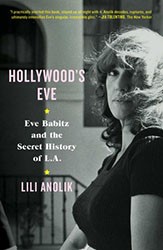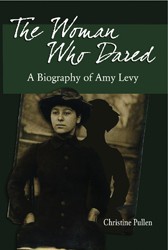The long-lived sculptor Louise Nevelson took part in every major development in 20th century art — from primitivism through cubism, abstract expressionism, pop art, and more. Nevelson herself was a larger-than-life creature, often donning outrageous costumes for dramatic effect.
The author, clearly an unbridled admirer, has researched Nevelson’s life so extensively that the book could be read as a history of 20th century art, with a particular focus on the New York scene. The author is both an art historian and a psychoanalyst, and her narrative includes much analytic comment regarding Nevelson’s fraught relationship with her sisters, who provided lifelong support to Louise.
Nevelson’s family, the Berliawskys, settled in Maine at the turn of the 20th century, having emigrated from Ukraine to escape pogroms. Louise left by marrying the wealthy Charles Nevelson, with whom she had one son. She abandoned both in order to live alone and pursue her art. Her son Mike reestablished relations with his mother and the book details their relationship.
Most interesting are the artist’s relationships with her art dealers, who included some of the best-known: Martha Jackson, Sidney Janis, and Pace dealer Arne Glimcher, her ultimate supporter. Sexually liberated, Nevelson exploited some of her personal liaisons for assistance with her art. Many devoted friendships are described as well, in particular that with her assistant Diane Mackown. Much as Nevelson created art, she created her own persona. Sometimes the charisma got in the way of the facts, but that never impacted her friendships.
While Nevelson was active in the art world for decades without much success, her breakthrough came with the recognition that came for her boxes — creations of wood, metal, paper and found objects that were originally analyzed as “light and shadow” by the highly respected art critic Hilton Kramer of The New York Times. These large formations were personally installed by Nevelson and eventually exhibited in museums and galleries across the United States and Europe. Her legacy includes many permanently installed monumental sculptures in outdoor spaces.
Wilson also details Nevelson’s search for spirituality in what she referred to as the “fourth dimension,” undoubtedly related to her abiding identification with Surrealism. She later claimed to be psychologically helped by the Indian master Krishnamurti. Nevelson was seemingly oblivious to daily comforts, often living with bare essentials, but she managed to take trips to primitive archaeological sites to seek inspiration for her sculptures. Wilson discusses the artist’s signature use of black, then white, and, for a short period, gold in presenting her “architectural” creations.
Wilson has fine-combed Nevelson’s long life and career, leaving no detail, comment, or review unexplored. The result is an exhaustive and endlessly interesting window into both the artist and her work — which are inextricably tied.
Related Content:
- Reading List: Jewish Artists
- The Sculpture of Louise Nevelson: Constructing a Legend edited by Brooke Kamin Rapaport
- 50 Artists You Should Know by Edward van Voolen





